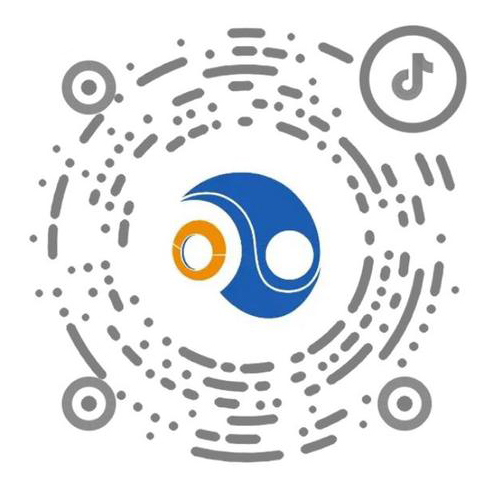遥操作(Teleoperation)在机器人行业中扮演着至关重要的角色,不仅在无人驾驶(Autonomous Driving)领域中广泛应用,还在各类机器人系统中发挥了巨大的作用。遥操作技术使得操作员可以远程控制机器人执行任务,特别是在危险、复杂或人类难以进入的环境中,提供了确保任务顺利执行的可靠技术【1】。
遥操作的定义及应用场景
遥操作是指通过远程通信网络控制机器人设备执行任务的技术手段。这种技术广泛应用于多个领域,如太空探索、核工业、医疗手术和军事任务等【2】。操作员无需直接进入危险或难以到达的工作环境,通过遥操作实现对机器人设备的精确控制。这种技术不仅提升了任务的效率和安全性,还极大地拓展了人类活动的边界【3】。
在机器人行业中,遥操作通常在以下场景中使用:
- 危险环境操作:在放射性环境、极端温度或深海等高危区域,遥操作能够帮助操作员远程操控机器人执行任务,避免人类直接进入危险区域的风险【4】。例如,在核工业中,遥操作机器人被用于检测、维修和清理核反应堆【5】。
- 精密医疗操作:遥操作在医疗机器人中的应用极为广泛,如达芬奇手术机器人,医生能够通过遥操作系统进行远程微创手术,显著提高了手术的精度和安全性【6】。
- 远程救援:遥操作机器人可以进入灾区或坍塌的建筑物,执行搜救任务,并通过实时传输的视频数据帮助救援队伍评估现场情况【7】。
- 太空与深海探测:在太空探测器和深海潜水器上,遥操作被广泛用于勘探、测绘和采样任务,远程操作使得这些极端环境中的任务得以顺利进行【8】。
遥操作的主要设备和方式
遥操作的实现依赖于多种关键设备和技术:
- 通信系统:低延迟、高带宽的通信网络是遥操作的核心技术,如5G、卫星通信和专用无线网络等【9】。这些系统的稳定性和及时性决定了遥操作的实时性和有效性。
- 传感器设备:机器人上的传感器(如摄像头、激光雷达、力觉传感器)为操作员提供实时的环境数据,帮助其做出准确的操作决策【10】。
- 控制界面:操作员通过物理操纵杆、虚拟现实设备或触摸屏等控制界面发送操作指令,这些设备的设计高度模拟实际操作环境,以提升操作的直观性和精准性【11】。
- 反馈系统:力觉和触觉反馈系统帮助操作员感知远程环境中的物理阻力,从而增强对机器人操作的感知和控制【12】。
- AI辅助决策:遥操作系统通常结合人工智能算法,为操作员提供辅助决策,优化任务执行流程【13】。
- 冗余设计和安全机制:在关键任务中,遥操作系统通常具有冗余设计,确保即使部分设备失效,任务仍然可以安全执行【14】。另外,身份验证、加密通信等安全措施也进一步提高了系统的可靠性【15】。
遥操作的未来发展方向
随着机器人技术、人工智能和通信技术的不断进步,遥操作将在机器人行业中扮演更重要的角色。未来的遥操作系统将更加智能化,操作员将通过更先进的手段(如脑机接口、语音控制等)与机器人进行互动【16】。此外,6G和量子通信等新兴技术的应用将大幅降低操作延迟,提升操作精度和效率【17】。
遥操作不仅提升了机器人在极端环境下的适应能力,还使得人类能够在更安全、高效的方式下完成复杂任务。随着技术的不断成熟,遥操作将在更多领域中得到广泛应用,成为未来智能机器时代的重要支柱【18】。
参考文献
- K. Darvish et al., "Teleoperation of Humanoid Robots: A Survey," in IEEE Transactions on Robotics, vol. 39, no. 3, pp. 1706-1727, June 2023, doi: 10.1109/TRO.2023.3236952.
- Lichiardopol, S. (2007). A survey on teleoperation. (DCT rapporten; Vol. 2007.155). Technische Universiteit Eindhoven.
- Huang, Z.; Wang, Z.; Bai, W.; Huang, Y.; Sun, L.; Xiao, B.; Yeatman, E.M. A Novel Training and Collaboration Integrated Framework for Human–Agent Teleoperation. Sensors 2021, 21, 8341. https://doi.org/10.3390/s21248341
- N. Marturi et al., "Towards advanced robotic manipulation for nuclear decommissioning: A pilot study on tele-operation and autonomy," 2016 International Conference on Robotics and Automation for Humanitarian Applications (RAHA), Amritapuri, India, 2016, pp. 1-8, doi: 10.1109/RAHA.2016.7931866.
- Tokatli, O.; Das, P.; Nath, R.; Pangione, L.; Altobelli, A.; Burroughes, G.; Jonasson, E.T.; Turner, M.F.; Skilton, R. Robot-Assisted Glovebox Teleoperation for Nuclear Industry. Robotics 2021, 10, 85. https://doi.org/10.3390/robotics10030085
- Avgousti, S., Christoforou, E.G., Panayides, A.S. et al. Medical telerobotic systems: current status and future trends. BioMed Eng OnLine 15, 96 (2016). https://doi.org/10.1186/s12938-016-0217-7
- D. Okabe, N. Sato and Y. Morita, "Tele-operation system for rescue robot by inputting target position of end-effector," Proceedings of the 2013 IEEE/SICE International Symposium on System Integration, Kobe, Japan, 2013, pp. 861-866, doi: 10.1109/SII.2013.6776642.
- M. V. Jakuba et al., "Teleoperation and robotics under ice: Implications for planetary exploration," 2018 IEEE Aerospace Conference, Big Sky, MT, USA, 2018, pp. 1-14, doi: 10.1109/AERO.2018.8396587.
- D. G. Black, D. Andjelic and S. E. Salcudean, "Evaluation of Communication and Human Response Latency for (Human) Teleoperation," in IEEE Transactions on Medical Robotics and Bionics, vol. 6, no. 1, pp. 53-63, Feb. 2024, doi: 10.1109/TMRB.2024.3349612.
- G. Pang, G. Yang and Z. Pang, "Review of Robot Skin: A Potential Enabler for Safe Collaboration, Immersive Teleoperation, and Affective Interaction of Future Collaborative Robots," in IEEE Transactions on Medical Robotics and Bionics, vol. 3, no. 3, pp. 681-700, Aug. 2021, doi: 10.1109/TMRB.2021.3097252.
- Antal K. Bejczy,Sensors, Controls, and Man-Machine Interface for Advanced Teleoperation.Science208,1327-1335(1980).DOI:10.1126/science.208.4450.1327
- R. V. Patel, S. F. Atashzar and M. Tavakoli, "Haptic Feedback and Force-Based Teleoperation in Surgical Robotics," in Proceedings of the IEEE, vol. 110, no. 7, pp. 1012-1027, July 2022, doi: 10.1109/JPROC.2022.3180052.
- J. Corredor, J. Sofrony and A. Peer, "Decision-Making Model for Adaptive Impedance Control of Teleoperation Systems," in IEEE Transactions on Haptics, vol. 10, no. 1, pp. 5-16, 1 Jan.-March 2017, doi: 10.1109/TOH.2016.2581807.
- L. Capodivento, T. Borzone, T. Grasso and C. Lauretti, "A bidirectional human-machine control interface based on virtual fixtures for safe teleoperation of hyper-redundant robots," in IEEE Access, doi: 10.1109/ACCESS.2024.3452029.
- Dede, M. and Tosunoglu, S. (2006), "Fault‐tolerant teleoperation systems design", Industrial Robot, Vol. 33 No. 5, pp. 365-372. https://doi.org/10.1108/01439910610685034
- von Haxthausen, F., Böttger, S., Wulff, D. et al. Medical Robotics for Ultrasound Imaging: Current Systems and Future Trends. Curr Robot Rep 2, 55–71 (2021). https://doi.org/10.1007/s43154-020-00037-y
- Opiyo, S., Zhou, J., Mwangi, E. et al. A Review on Teleoperation of Mobile Ground Robots: Architecture and Situation Awareness. Int. J. Control Autom. Syst. 19, 1384–1407 (2021). https://doi.org/10.1007/s12555-019-0999-z
- G. Li, Q. Li, C. Yang, Y. Su, Z. Yuan and X. Wu, "The Classification and New Trends of Shared Control Strategies in Telerobotic Systems: A Survey," in IEEE Transactions on Haptics, vol. 16, no. 2, pp. 118-133, April-June 2023, doi: 10.1109/TOH.2023.3253856.
|

 关注B站
关注B站 关注抖音
关注抖音 关注微信公众号
关注微信公众号